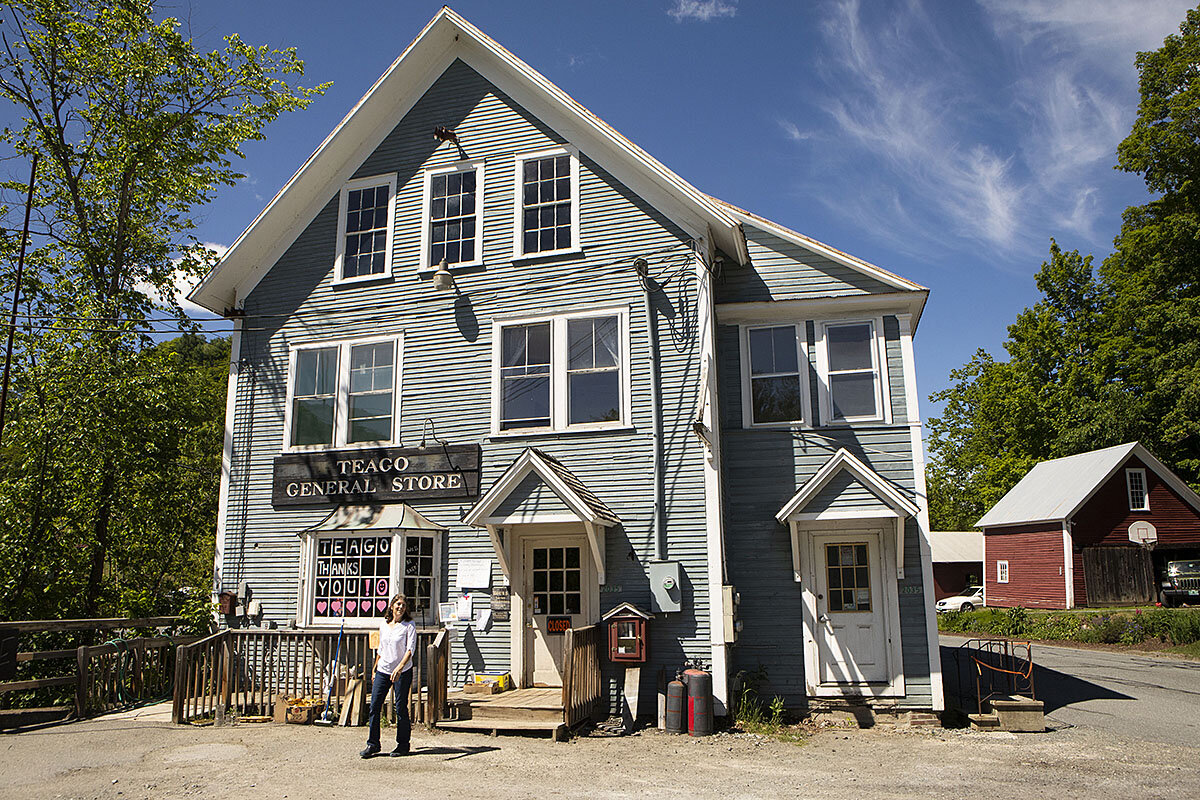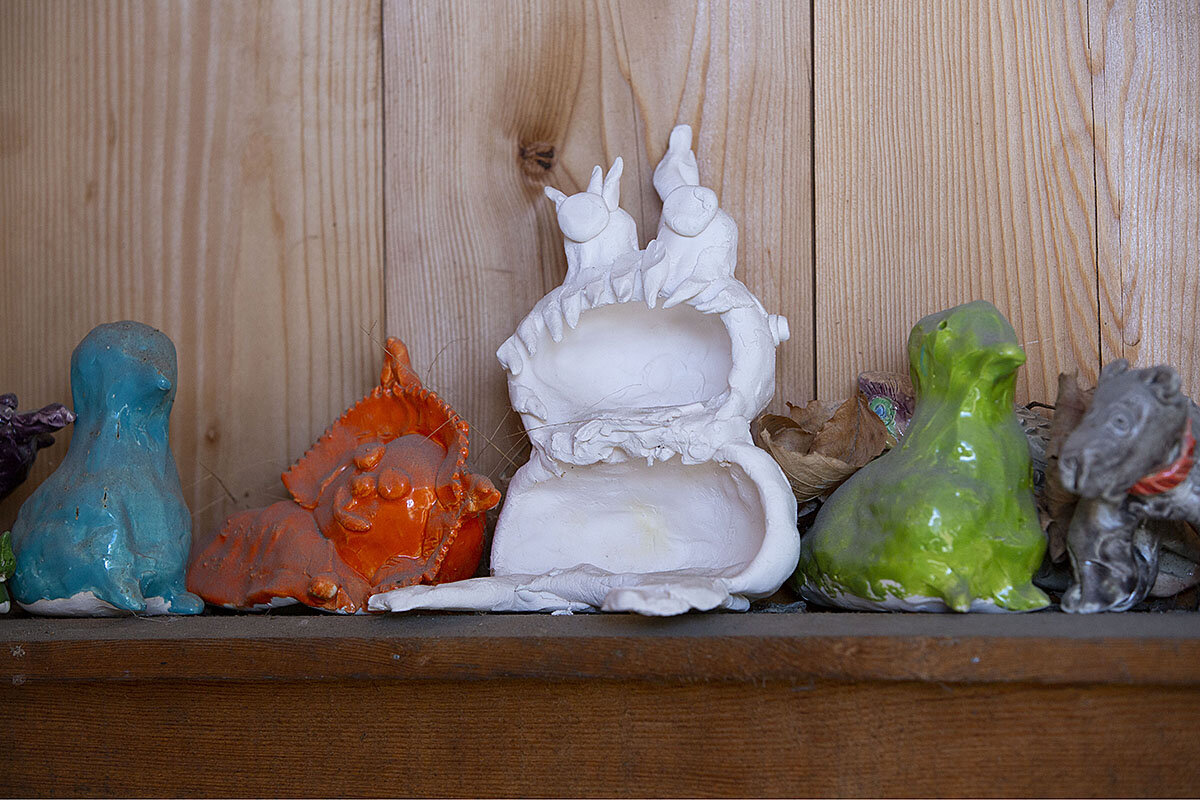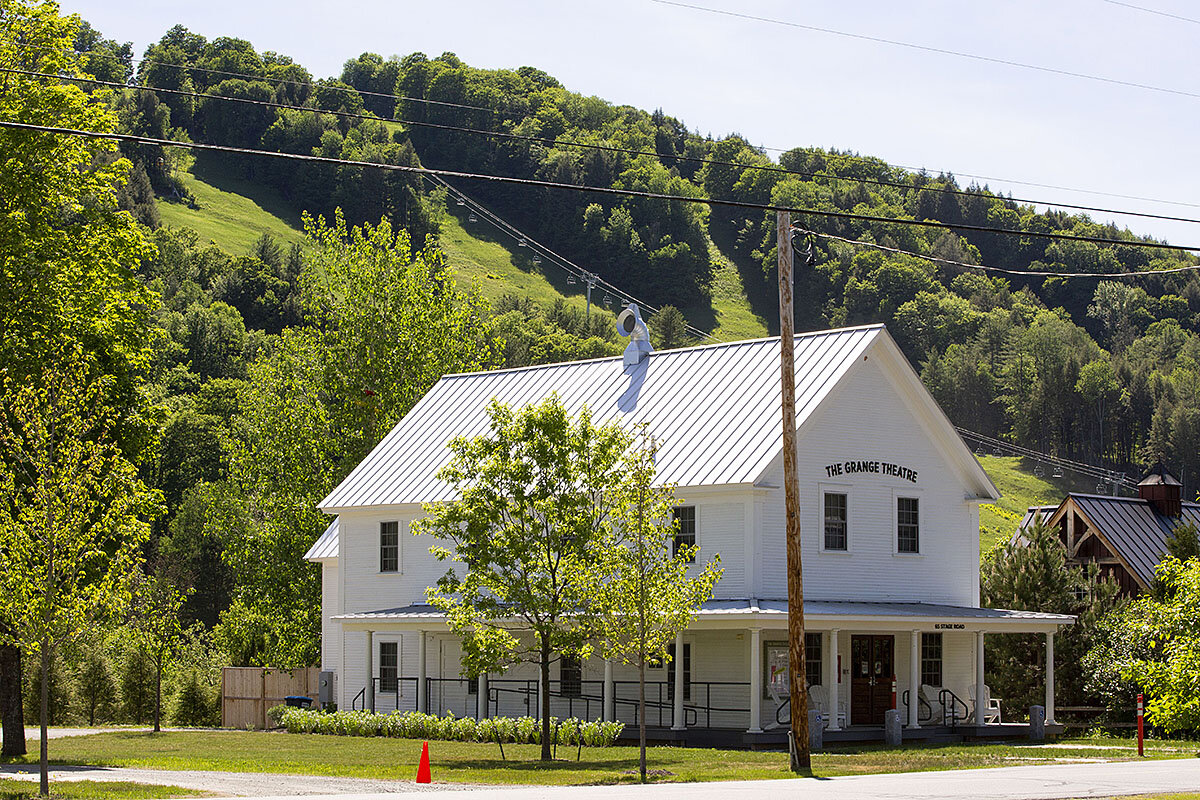How one woman turned a small Vermont town into an arts destination
Loading...
| South Pomfret, Vt.
When Kathleen Dolan started teaching music and art to young children in Woodstock, Vermont, in 2003, she was used to being a one-person operation.
In an earlier role in Boston, she conducted music programs at child care centers, and she recalls, “I would just travel with my keyboard.”
In a span of 10 years, she went from toting her keyboard to renting a small downtown space in Vermont for classes, to owning a dynamic arts center that would give her community and others accessibility to the arts.
Her local nonprofit, ArtisTree Community Arts Center, has become a powerhouse of creativity, welcoming local artists to its classes, art exhibitions, concerts, and theater productions in the village of South Pomfret. Here, they can explore their craft and share it with the world. Driven by Ms. Dolan, a spirit of inclusion and openness to all artists and art forms guides ArtisTree’s mission.
“It’s a place where individuals feel their creative, imaginative selves can thrive, and it’s supported,” she says. “It’s supported by teachers, by the people around you, by the space.”
Woodstock-based artist Judith Taylor is one of the artists who enjoys that support.
“I really believe we’re here to question and imagine and create and tell stories,” Ms. Taylor says. “I always had a feeling at ArtisTree that I was welcome to do that. I really got the courage to explore whatever interested me.”
Ms. Dolan has also brought new vitality to the village of South Pomfret, a sliver of quintessential New England where the local ski resort Suicide Six towers above the landscape. The arts center, gallery, and the 90-seat Grange Theatre have transformed this town of about 900 into something of a cultural center.
Community spirit
The journey began when Ms. Dolan rented a downtown space in Woodstock in 2003 to provide music and art for young children.
“That was the beginning of me noticing how valuable a community space was for parents and kids,” Ms. Dolan says.
And she always honored that community spirit, says Dail Frates, executive director of Zack’s Place, a nonprofit serving children and adults with special needs, where Ms. Dolan sometimes teaches programs. Mrs. Frates remembers a time when only a couple of participants showed up for a class Ms. Dolan was teaching there. Mrs. Frates apologized for the low attendance, and she says Ms. Dolan’s response touched her. “She said, ‘Well, they matter too. It doesn’t matter if it’s two or 20 people. Everybody matters just as much.’”
“She’s such a kind, considerate, and respectful person. It doesn’t matter who you are; you’re important to her.”
After Ms. Dolan moved her organization to a larger Woodstock location in 2006, community participation skyrocketed, and local partnerships grew. She continued putting resources into it, and in 2011, gave the organization its current name: ArtisTree.
In 2013, ArtisTree’s biggest expansion to date included the opening of the arts center and gallery in South Pomfret. For the first time, ArtisTree had a location it owned.
“We got to design the space, and we had performances in mind, so that piece of it really started to get more attention and energy,” Ms. Dolan says.
Art enthusiasts can now find a wide range of classes there, including the visual arts, theater arts, music, movement classes, and creative wellness. The wellness classes offer “focused, personal growth experience through a given art form.”
“That’s another way that the arts can be of service to people,” Ms. Dolan says. “You can really learn something about yourself and find some peace and wellness through an art project as well.”
Fiona Davis, director of the ceramics program, says accessibility is one of the hallmarks of Ms. Dolan’s work.
“We get the chance to provide art to people who don’t always get that opportunity,” Ms. Davis says. “That’s been one of the most important things to me.”
Small-town revival
The arts center was also a game-changer for this tiny village, spurring the restoration of a historical barn, farmhouse, and Grange Hall, the last of which became Pomfret’s first theater venue in 2017. Its theater productions draw actors and performing arts fans from around the region.
The projects boosted visitor traffic and gave the village a new dose of vitality it hadn’t seen in decades. Still, it was important to Ms. Dolan to honor South Pomfret’s history. At the Grange, a cherished landmark in town, ArtisTree salvaged parts of the building wherever possible, displaying several historical Grange artifacts behind glass.
“We were really sensitive to that because the Grange held a lot of the cultural history of this area,” Ms. Dolan says.
All this adds up to a unique arts experience.
“It’s pretty significant that we have this amazing, amazing facility,” Mrs. Frates says. “I love going to the theater and watching the productions.”
(Due to the COVID-19 pandemic, theater and music events are canceled for the season as of publication.)
In coming years Ms. Dolan plans to host more productions featuring local talent.
“It brings more participation from the people that live here, and that’s the whole point of ArtisTree,” Ms. Dolan says.
Ms. Taylor, the Woodstock artist, has been working with ArtisTree for years. She remembers displaying her work of art “Mudrug” in ArtisTree’s gallery in 2017. She fashioned mud from the Dead Sea, brought back from a trip to Israel and the Palestinian territories, into the shape of a prayer rug adorned with intricate designs, and allowed it to dry on the floor, where it was exhibited facing east. It was meant to honor a culture at a time when there was a lot of discussion in the world about Muslims, Ms. Taylor explains.
“My intention really was to make something beautiful and fragile, because it seemed to me there was so much negative feeling about something that was in the world and has great meaning,” she says.
Ms. Taylor treasures the memory of that exhibition, and keeps the dried mud that formed “Mudrug” in a glass bottle at her home.
“This is what Kathleen made possible in my life, and I’m so grateful, because if she did it for me, she’s done it for so many other people.”








